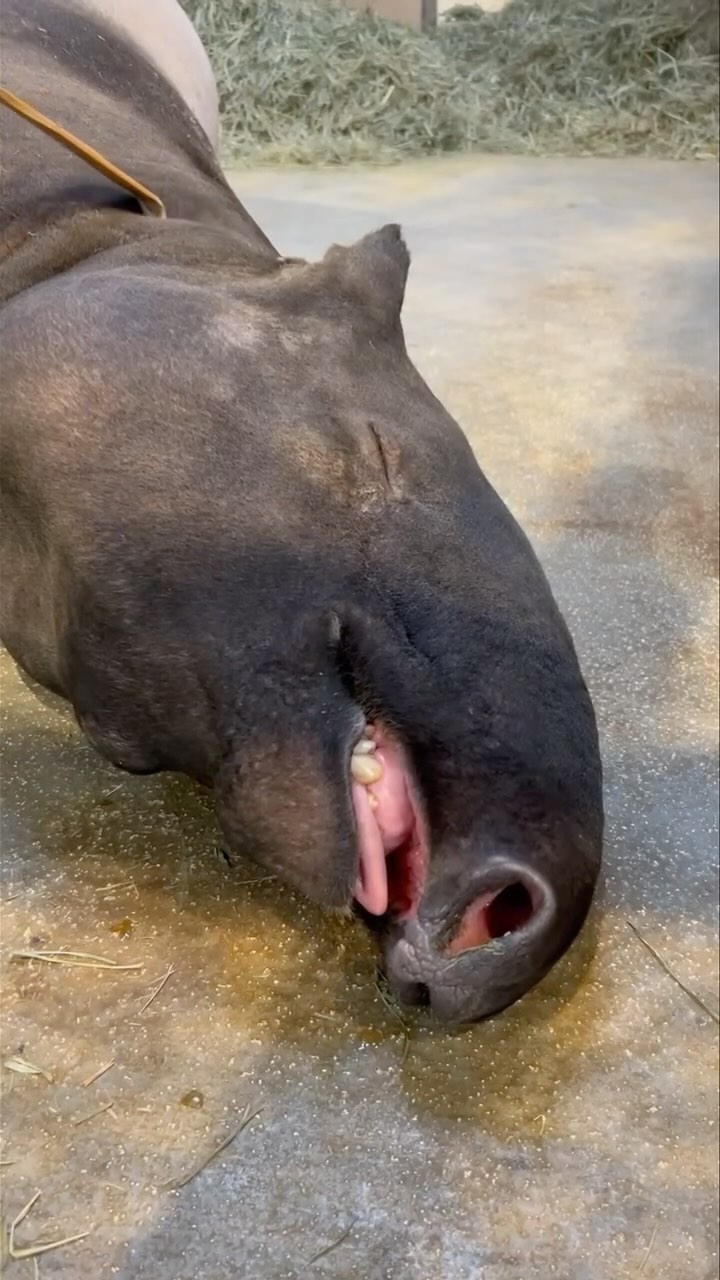- Yuna, a pregnant tapir, is receiving special care from her keepers, reflecting the importance of animal welfare and husbandry in zoos.
- Yuna and Baku are part of the Species Survival Plan, highlighting the vital role of zoos in conservation efforts for endangered species.
- The gestation period and birthing process of Malayan tapirs showcase their unique reproductive biology.
- Ultrasound technology allows zoos to monitor the health and development of unborn tapir calves.
- The global conservation status of Malayan tapirs underscores the need for effective breeding programs and habitat preservation.
Yuna, the pregnant tapir featured in this narrative, is an excellent demonstration of the commitment to animal welfare exhibited by modern zoos. Yuna’s current care regimen, involving behind-the-scenes scratches and tender loving care (TLC) from her keepers, underscores the importance of providing a nurturing environment for captive animals. These practices ensure that animals like Yuna live healthy, comfortable lives while under human care. Regular interaction, such as that depicted in the social media content shared by Keeper Katie, helps to foster a positive relationship between animals and humans. This, in turn, facilitates routine health assessments and reduces stress during medical procedures.
Yuna and her mate, Baku, are integral members of the Species Survival Plan, a program meticulously designed to manage and breed endangered species in zoos. The program’s goal is to maintain a healthy and genetically diverse population that could one day bolster wild populations. Zoos worldwide collaborate on these breeding programs, utilizing science-based strategies to pair genetically suitable animals. This enhances the genetic diversity necessary for long-term survival and adaptation. For species like the Malayan tapir, threatened by habitat loss and declining populations, such programs are crucial conservation tools.
The reproductive biology of the Malayan tapir is a fascinating aspect of their life cycle. These remarkable animals experience a lengthy gestation period that spans around 13 months, resulting in the birth of a single calf—a phenomenon that is a consequence of their need to invest significant resources into nurturing each offspring. Twin births in tapirs are rare, highlighting the species’ strategy to maximize the survival chances of each individual calf. Understanding the reproductive nuances of Malayan tapirs is essential for zoos to provide optimal conditions for pregnancy and offspring rearing.
Modern technology, such as ultrasound imaging, plays a pivotal role in tracking and supporting the reproductive health of pregnant animals like Yuna. The use of ultrasounds allows veterinarians and zookeepers to monitor the development of the unborn calf closely. It provides invaluable information about fetal growth, movement, and heart rate, factors that are crucial for assessing the health of both the mother and the developing calf. Regular ultrasound examinations help in identifying any potential complications early, allowing for prompt interventions to safeguard the well-being of the tapir and her unborn calf.
The conservation status of Malayan tapirs in the wild is precarious, largely due to habitat destruction and fragmentation, as well as poaching. This stresses the importance of both in-situ and ex-situ conservation efforts. While strategies on the ground aim to preserve and restore habitats, ex-situ programs like those involving Yuna and Baku are essential for developing a sustainable population base outside their natural habitat. These efforts provide a safeguard against complete extinction, enabling researchers to study and understand the ecological needs of tapirs, which can then enhance habitat management in the wild.
The animal care and conservation practices demonstrated through the experience of Yuna, the pregnant tapir, mirror a broader dedication to the stewardship and preservation of the Malayan tapir. Through collaboration among zoos and wildlife organizations, these initiatives strive to create a viable future for endangered species. In this tightly woven network of conservation efforts, Yuna and Baku serve as ambassadors, illustrating the profound impact of targeted breeding programs and the importance of species survival strategies in conserving biodiversity.
*****
Source Description
Yuna, our pregnant tapir, is enjoying some behind-the-scenes scratches and TLC from her keepers. Yuna’s recent ultrasound revealed healthy movement and heartbeat. Yuna and soon-to-be father Baku are part of the Species Survival Plan, a managed breeding program for endangered Malayan tapirs. After a 13-month gestation period, a single tapir baby, called a calf, is born—twins are very rare.
📹: Keeper Katie


